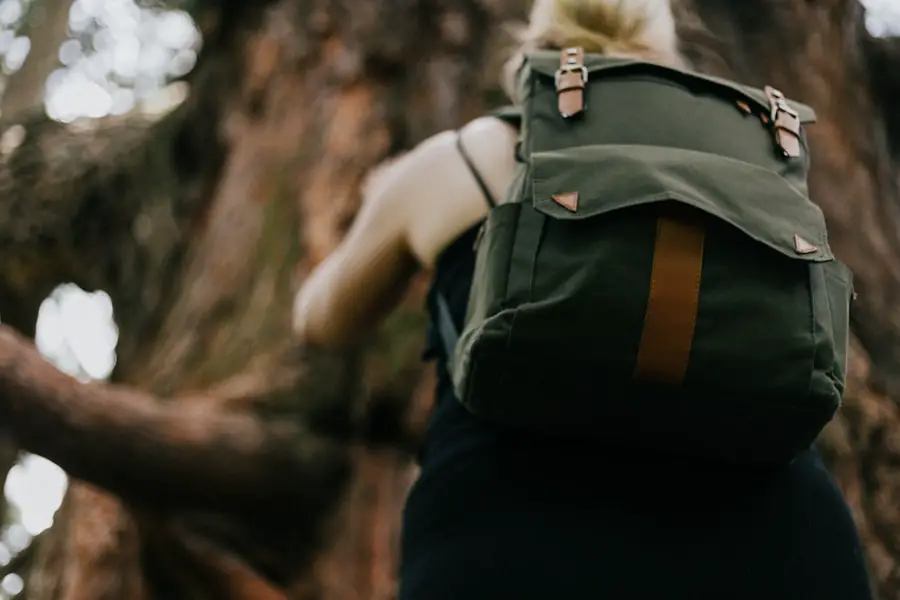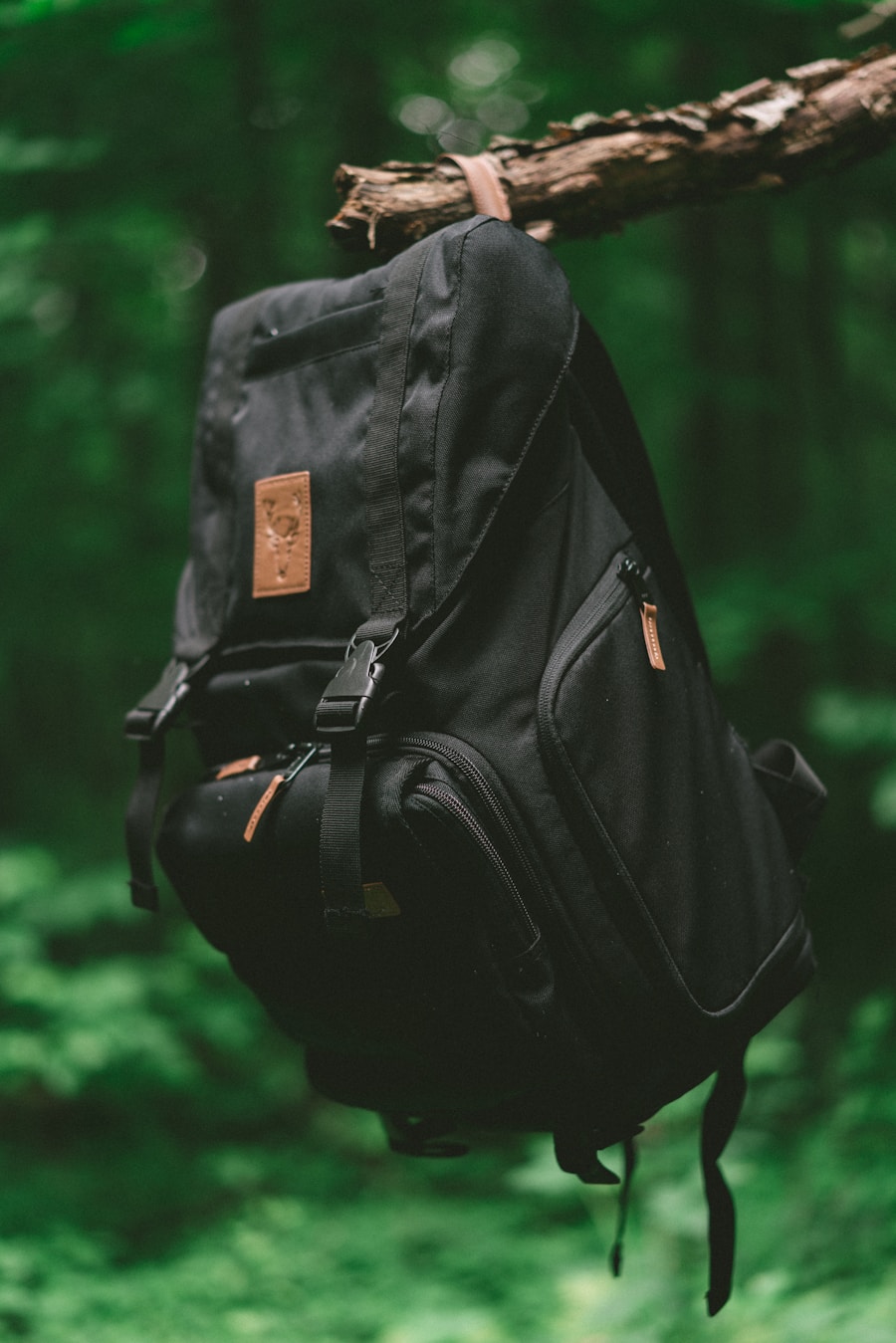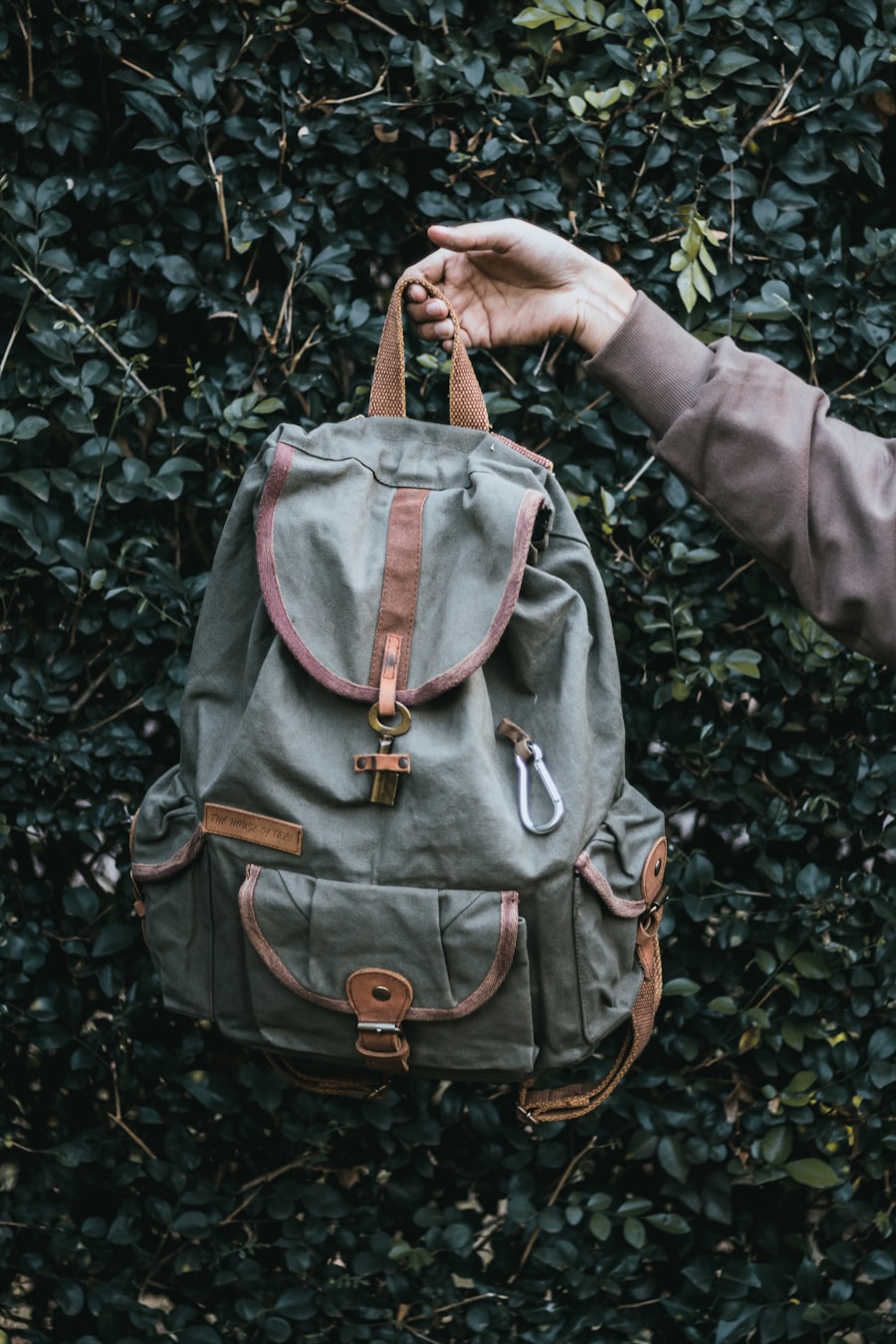Choosing the right size hiking backpack is a critical decision that can significantly impact your outdoor experience. A backpack that is too large can lead to unnecessary weight and bulk, making it cumbersome to carry, while one that is too small may not accommodate all your essential gear, forcing you to leave behind items that could be crucial for your comfort and safety. The right size ensures that the weight is distributed evenly across your body, reducing strain on your back and shoulders, which is particularly important during long hikes or multi-day treks.
Moreover, the right-sized backpack enhances your overall hiking efficiency. When a backpack fits well, it allows for better movement and agility, enabling you to navigate challenging terrains with ease. A well-fitted backpack also minimizes the risk of chafing and discomfort, which can detract from the enjoyment of your hike.
Therefore, understanding the importance of selecting the appropriate size is not merely about aesthetics; it is about ensuring a safe, comfortable, and enjoyable outdoor experience.
Key Takeaways
- Choosing the right size hiking backpack is crucial for comfort and functionality on the trail.
- Factors to consider when selecting the perfect size backpack include capacity, torso length, and hip size.
- Finding the right fit for your body type involves measuring your torso length and hip size, and trying on different backpacks for comfort.
- Packing efficiently with the perfect size backpack involves distributing weight evenly and organizing items for easy access.
- Benefits of a properly sized hiking backpack include reduced strain on the body, improved balance, and increased comfort during long hikes.
Factors to Consider When Choosing the Perfect Size Hiking Backpack
When selecting a hiking backpack, several factors come into play that can influence the choice of size. One of the primary considerations is the duration of your hike. Day hikes typically require smaller backpacks ranging from 15 to 30 liters, which are sufficient for carrying water, snacks, and a first-aid kit.
In contrast, multi-day hikes necessitate larger packs, often between 50 to 70 liters, to accommodate sleeping gear, cooking equipment, and extra clothing. Understanding the length of your trip will help you determine the volume of gear you need to carry. Another critical factor is your body type and personal comfort preferences.
Different backpacks are designed with various torso lengths and hip belt sizes to cater to diverse body shapes. For instance, a person with a shorter torso may find a small or medium-sized backpack more comfortable than a large one, which could lead to improper weight distribution. Additionally, consider the type of gear you plan to carry; if you have bulky items like a tent or sleeping bag, you may need a larger pack with specific compartments designed for such equipment.
Evaluating these factors will guide you toward selecting a backpack that meets your specific needs.
Finding the Right Fit for Your Body Type

Finding the right fit for your body type is essential in ensuring that your hiking backpack serves its purpose effectively. The first step in achieving this is to measure your torso length accurately. This measurement is typically taken from the base of your neck to the top of your hip bones.
Many manufacturers provide sizing charts based on these measurements, allowing you to select a backpack that aligns with your body dimensions. A proper fit means that the weight of the pack rests comfortably on your hips rather than your shoulders, which can lead to fatigue over time. In addition to torso length, consider the width of your shoulders and the shape of your hips when selecting a backpack.
Some backpacks come with adjustable straps and hip belts that can be tailored to fit various body shapes. For example, if you have broader shoulders, look for packs with wider shoulder straps that distribute weight more evenly. Conversely, if you have a narrower frame, a pack with adjustable features will allow you to customize the fit for maximum comfort.
Trying on different models and adjusting them while wearing them can help you find the perfect fit for your unique body type.
How to Pack Efficiently with the Perfect Size Backpack
| Backpack Size | Capacity (liters) | Weight (lbs) | Dimensions (inches) |
|---|---|---|---|
| Small | 20-30 | 1.5-2.5 | 18 x 11 x 6 |
| Medium | 30-50 | 2.5-3.5 | 20 x 13 x 8 |
| Large | 50-70 | 3.5-5.5 | 22 x 15 x 10 |
Packing efficiently is an art that complements the selection of the right-sized backpack. Once you have chosen a backpack that fits well and meets your capacity needs, it’s time to consider how to organize your gear effectively. Start by placing heavier items close to your back and at the bottom of the pack; this positioning helps maintain balance and stability while hiking.
For instance, if you are carrying a water reservoir or heavy cooking equipment, these should be positioned in this manner to prevent them from pulling you backward. Utilizing compartments and pockets within your backpack can also enhance packing efficiency. Most hiking backpacks come equipped with various pockets designed for specific items such as water bottles, snacks, or first-aid kits.
By keeping frequently used items in easily accessible pockets, you can avoid rummaging through your entire pack during breaks or emergencies. Additionally, consider using packing cubes or compression sacks for clothing and sleeping gear; these not only save space but also keep your items organized and easy to find when needed.
Benefits of a Properly Sized Hiking Backpack
A properly sized hiking backpack offers numerous benefits that extend beyond mere comfort. One significant advantage is improved posture during hikes. When a backpack fits correctly, it encourages an upright posture by distributing weight evenly across your back and hips.
This alignment reduces strain on your spine and muscles, allowing you to hike longer distances without experiencing fatigue or discomfort. Furthermore, a well-sized backpack enhances your overall hiking experience by providing better stability on uneven terrain. When weight is distributed correctly, it minimizes the risk of losing balance or falling while navigating rocky paths or steep inclines.
Additionally, having enough space for all necessary gear means you can be better prepared for changing weather conditions or unexpected challenges during your hike. This preparedness not only boosts confidence but also contributes to a more enjoyable outdoor adventure.
Common Mistakes to Avoid When Selecting a Hiking Backpack Size

When selecting a hiking backpack size, several common mistakes can lead to discomfort or inadequate packing capacity. One prevalent error is choosing a backpack based solely on its volume without considering personal fit and comfort. A large pack may seem appealing for its capacity but can become unwieldy if it does not fit well on your body.
It’s essential to prioritize fit over volume; a smaller pack that fits properly will often be more effective than a larger one that causes discomfort. Another mistake is neglecting to account for additional gear when determining size requirements. Many hikers underestimate the amount of equipment they will need for their trip, leading them to select a pack that is too small.
It’s crucial to consider not only the essentials but also any extra items such as food supplies, clothing layers for varying weather conditions, and safety gear like maps or compasses. Taking an inventory of what you plan to bring can help ensure that you choose a backpack size that accommodates all necessary items without compromising comfort.
Tips for Adjusting and Customizing the Fit of Your Backpack
Adjusting and customizing the fit of your backpack can significantly enhance comfort during hikes. Most modern hiking backpacks come equipped with adjustable straps and hip belts designed for this purpose. Start by adjusting the shoulder straps so that they sit snugly against your shoulders without causing pressure points.
The straps should allow for some movement but should not be so loose that they allow the pack to shift while walking. Next, focus on the hip belt; this component is crucial for transferring weight from your shoulders to your hips. The hip belt should sit comfortably on your hips rather than on your waist; this positioning helps distribute weight more effectively and reduces strain on your upper body.
Many backpacks also feature load-lifters—straps located near the top of the shoulder straps—that can be adjusted to pull the pack closer to your body for better balance. Experimenting with these adjustments while wearing the pack can help you find the most comfortable configuration for your unique body shape.
Where to Find the Best Selection of Perfect Size Hiking Backpacks
Finding the best selection of perfectly sized hiking backpacks requires exploring various retail options both online and in physical stores. Outdoor specialty retailers often carry a wide range of brands and models tailored specifically for hiking enthusiasts. Stores like REI or Bass Pro Shops provide knowledgeable staff who can assist in finding the right size and fit based on individual needs.
Additionally, many of these retailers offer fitting services where customers can try on multiple packs while receiving expert advice. Online shopping has also become increasingly popular for purchasing hiking backpacks due to its convenience and variety. Websites like Amazon or Backcountry offer extensive selections along with customer reviews that can provide insights into sizing and performance from real users.
However, when shopping online, it’s essential to refer to sizing charts provided by manufacturers and consider return policies in case adjustments are needed after trying out the pack in real-world conditions. By exploring both in-store and online options, hikers can find a perfect-sized backpack that meets their specific requirements for comfort and functionality during their outdoor adventures.
If you’re looking for the perfect hiking backpack, you may also be interested in checking out this article on the best travel fishing pole here. Having the right gear for your outdoor adventures is essential, and a reliable fishing pole can add an extra element of fun to your hiking trips.
Love travel? Join Our Facebook Community For More Tips.
FAQs
What is the ideal size for a hiking backpack?
The ideal size for a hiking backpack depends on the length of your trip and the amount of gear you need to carry. For day hikes, a 20-30 liter backpack is usually sufficient, while for overnight trips, a 40-50 liter backpack is recommended. For longer multi-day hikes, a 50-70 liter backpack is typically used.
How do I determine the right size for a hiking backpack?
To determine the right size for a hiking backpack, consider the duration of your hike, the weather conditions, and the gear you need to carry. It’s important to try on different sizes and styles of backpacks to find the one that fits your body comfortably and can accommodate all your gear.
What features should I look for in a hiking backpack?
When choosing a hiking backpack, look for features such as adjustable shoulder straps, padded hip belts, multiple compartments for organization, external attachment points for gear, hydration bladder compatibility, and a durable, water-resistant material.
Can I use a regular backpack for hiking?
While you can use a regular backpack for short day hikes, it’s not recommended for longer or more challenging hikes. Regular backpacks often lack the necessary support, padding, and features needed for carrying hiking gear comfortably and safely.
Are there different sizes of hiking backpacks for men and women?
Yes, many hiking backpack brands offer specific sizes and designs tailored to fit the anatomical differences between men and women. Women’s hiking backpacks typically have shorter torso lengths, narrower shoulder straps, and a more contoured hip belt to provide a better fit for female hikers.
